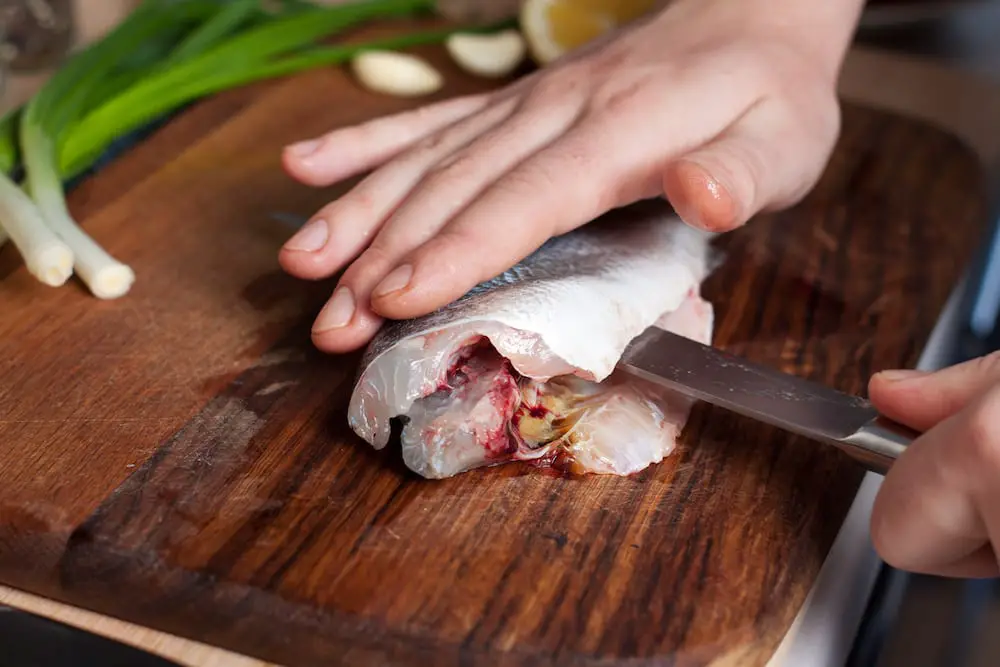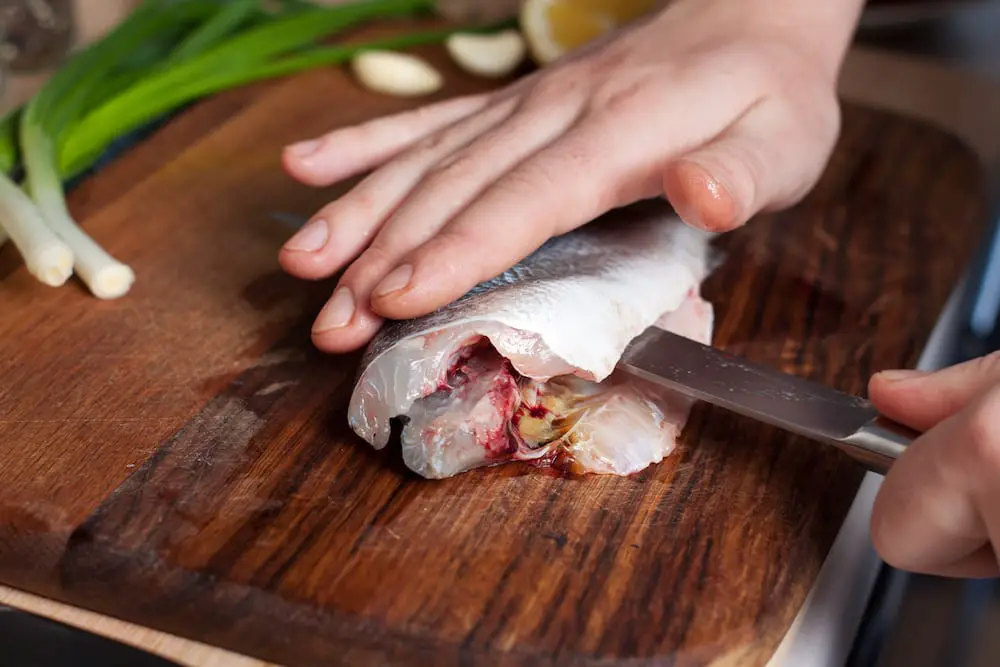Crappie is delicious and found in almost all bodies of freshwater in North America. It’s a bit of a struggle to completely catch crappies because they fight hard before you can pull it into your boat. Nonetheless, a fresh catch always makes the best dish!
You may think that cleaning crappies are complicated, but it’s not. All you need is a sharp fillet knife and a familiarity with the anatomy of the fish. To help you gain this knowledge and skill, we have produced the following guide.
What Are Crappies?
Crappies are part of an American sport fish found in many locations in the United States of America. Crappie’s tender, white, and flaky meat is delicious to eat.
At present, there are two recognized species of crappies: black and white. The most massive white crappie ever recorded weighed 5.2 pounds (2.36 kg) while the record for the black variety stands at 5 pounds (2.27 kg).
Adult crappies eat smaller species of fish and also like to feed on insects, zooplankton, and crustaceans.
At daytime, crappies are less active and usually stay in weed beds and objects immersed under the water. It is only during dusk till dawn that they swim and come near the shore to eat.
In addition, crappies breed two times a year when the water’s temperature reaches 50 degrees. They usually produce beds at six to 15 feet deep.
Catching Crappies
You can find black crappies in deep, clear, and cold waters. It is best to look for crappies in big ponds and shallow lakes that have mud and sand at the bottom.
Numerous crappie can be found in lakes because of its varied ecosystem. If you want to see the ideal crappie hole, look for the following as a guide:
- Underwater trees
- Sunken islands
- Dams
- Inlets
- Holes
- Vegetation
Crappies have small, thin mouths that rip easily so you need to use a light rod with a small reel. The most popular method of catching crappie is spider rigging, where an angler inside the boat positions several fishing rods from different angles.

How to Fillet a Crappie
It’s now time to clean your fresh catch! Follow these steps on how to fillet a crappie:
The best kind of knife for this is of course a fillet knife. If you don’t have one you can probably manage with certain other kitchen knives, or maybe consider our separate review of the best fillet knives if you’re thinking about buying one.
- Let’s start by cleaning the crappie or removing its main bone. To do so, lay the crappie on any flat surface. Hold it by the head and make a vertical cut behind the gill cover. Do this procedure on both sides of the fish.
- Insert the tip of your fillet knife into the top of the back fin. Run the filleting knife on top of the back fin down to the tail. Again, do the same on the other side of the fish.
- Once done, allow your fillet knife to make contact with the crappie’s backbone, making sure that the blade is pointing towards the tail.
- Firmly hold the crappie head and drag the sharp blade of your filleting knife along the length of the fish down to the tail.
- Now that the fish has been deboned, separate the skin from the meat. Do this by laying the fillet on the flat surface, skin side down. From the tail, slide the sharp edge of your fillet knife in between the skin and meat down to the other side to get one smooth fillet.
- On the head end of your fillet, you will see the rib cage is still attached. Using the curved tip of the fillet knife, carefully follow its edges so as not to damage and waste the flesh. You should have a v-shaped deboned fillet.
- Turn the fish and repeat the process on how to fillet a crappie on the other side of the fish.
After cleaning crappies, make sure to dispose of the unused portions of the fish. Have a trash bag nearby as you clean and fillet the crappie, so you have something to throw skin, bones, and entrails into. Tie it closed before throwing it out completely.
Tips for Cooking Crappies
After all the time spent in catching and cleaning crappies, it’s now time to reward yourself with a delicious crappie dish. The best way for you to enjoy your catch is straight out of the water. There are a lot of recipes found on the web for you to try.
There are also a lot of ways to prepare a crappie meal such as:
Grill
Just prepare your favorite marinade and soak your crappie fillet for a few minutes for it to absorb the flavors. Put your marinated fillets in the grill. Turn your fillet pieces over for even cooking and to prevent it from burning.
Fry
If you prefer to pan-fry the crappies, make sure that the crappies are still wet to keep their flavor intact. In a bowl, mix seasonings, flour, salt, and pepper then add your crappie fillets.
Cover the container and give it a little shake to coat the fillets with the mixture. Fry the coated fillet in oil until it turns golden brown.
You can also make crappie patties by combining the fillet, onions, garlic, eggs, breadcrumbs, pepper, mayonnaise, oil, and butter. Fry the patties in a non-stick frying pan for about eight minutes.
Bake
Baking the crappie in the oven is another cooking option you can try. Preheat the oven as you prepare the crappie.
Squeeze some lemon juice on the crappie then sprinkle it with salt and pepper. Try to add some oil to prevent it from sticking on the pan. Bake the fish for 15 minutes at 400 degrees Fahrenheit.
Final Words
If you are not keen to cook the crappie just yet, then you can store it in a freezer, refrigerator, or any container, making sure that the temperature is at around 40 degrees Fahrenheit. Remember to eat your stored raw crappies within ten days from when you caught it.
After learning about cleaning crappies and how to fillet a crappie plus some tips on how to catch and prepare a delicious meal, we hope that you can try catching and cooking this great tasting fish that abounds in the USA!


